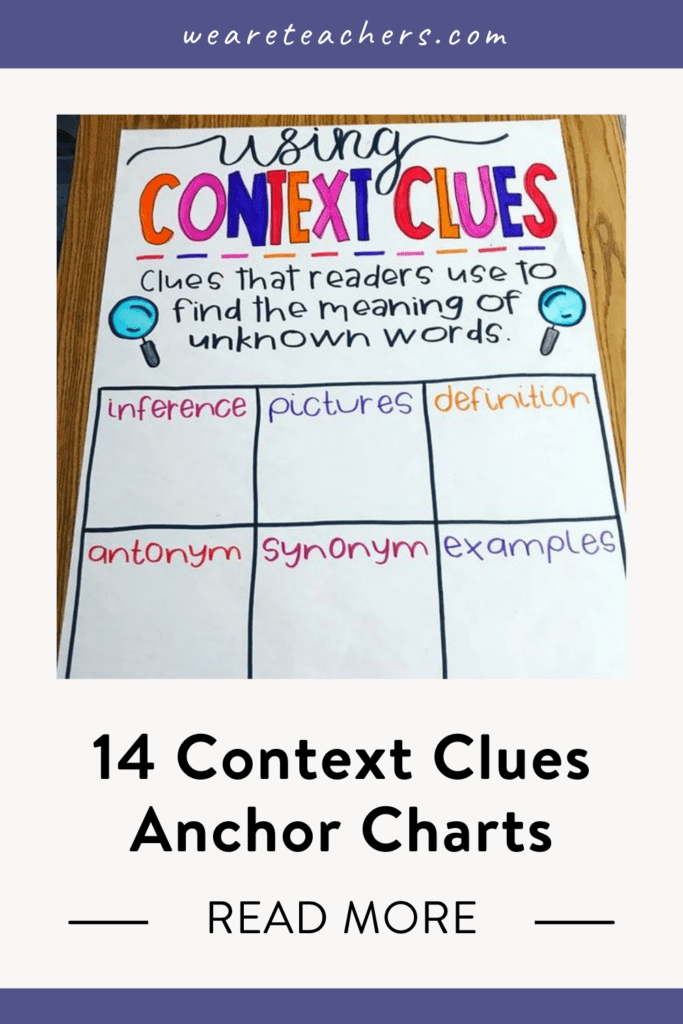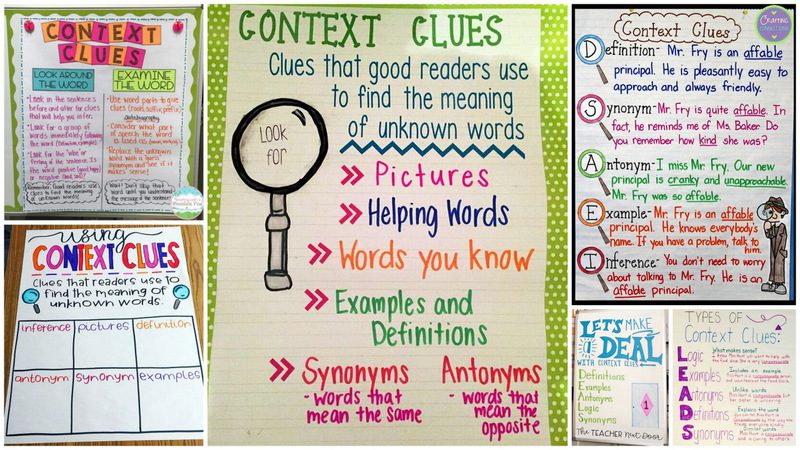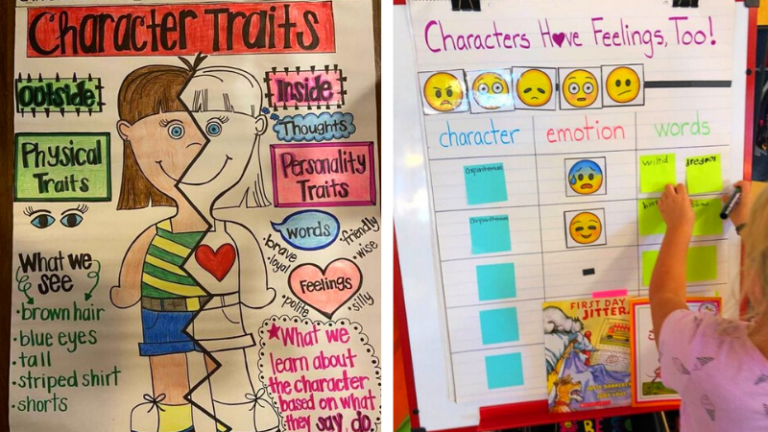New readers can get really frustrated when they come across words they don’t recognize. After all, no one wants to stop and look words up in the dictionary constantly. Some kids just skip past them, but then they may miss the meaning of the sentence. That’s why helping kids understand how to use context is so important. These context clues anchor charts make the process a little easier.
1. Look For Clues
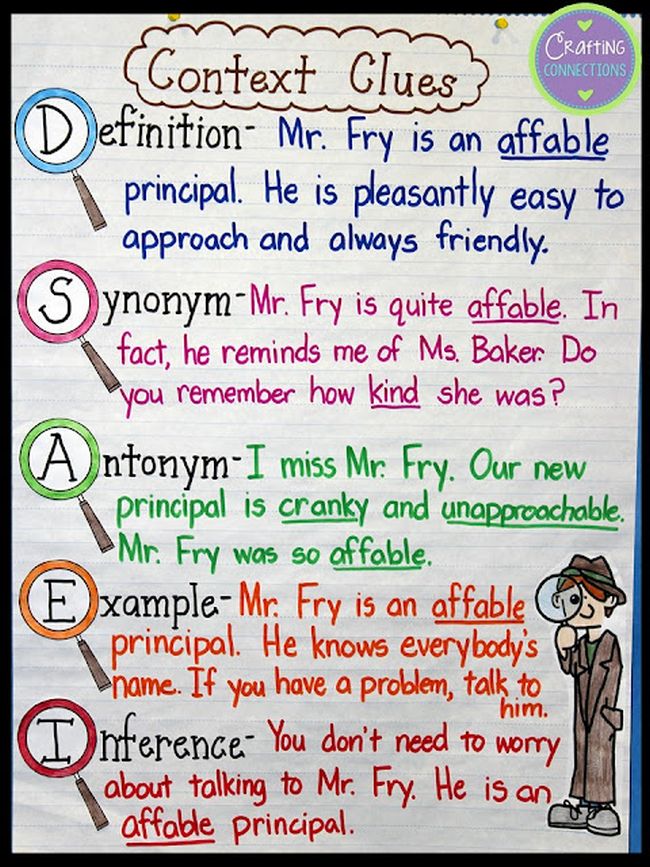
A smart reader knows how to look for clues in the words around the unknown word. We love the use of magnifying glasses to remind kids to be on the lookout!
Learn more: Crafting Connections
2. Word Detective
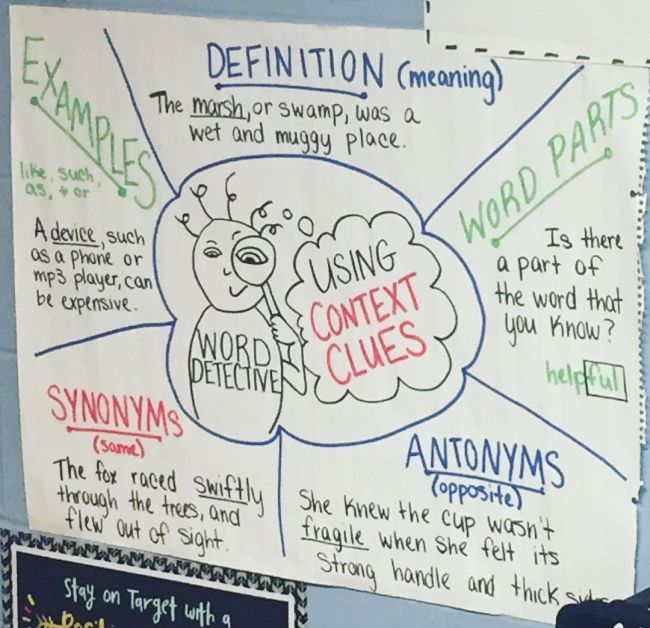
Looking for context clues turns students into word detectives. Don’t want to draw a detective yourself? Find the best free teacher clip art here.
Learn more: TeachStarter
[contextly_auto_sidebar]
3. Types of Context Clues
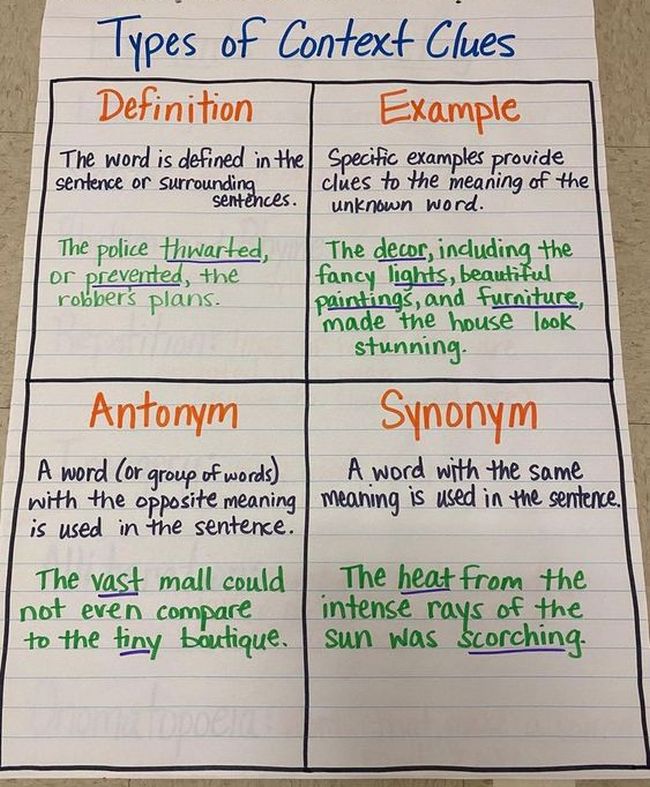
This simple chart lays out four basic ways readers can look for clues in the surrounding text when they encounter an unknown word. It’s easy enough for any teacher to make, and students can help you find examples to include.
Learn more: Bilingual By The Beach/Pinterest
4. Follow the LEADS
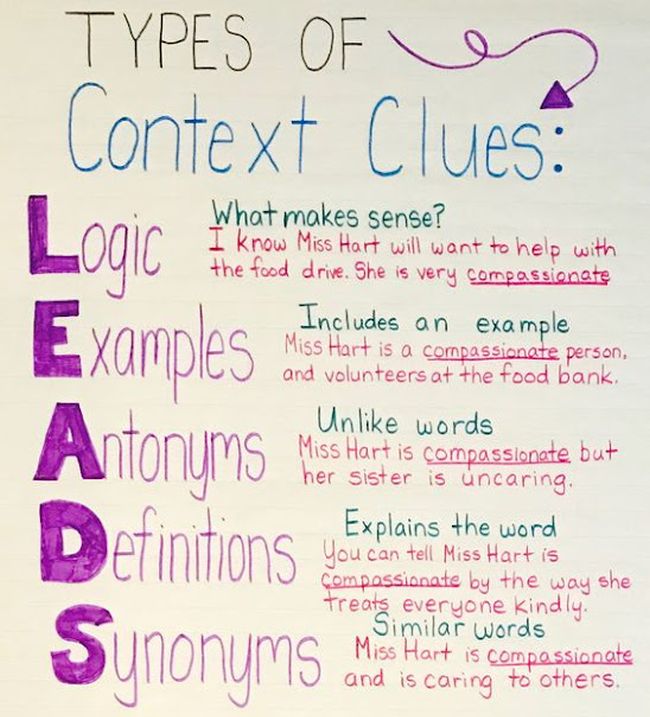
A good word detective follows the LEADS: logic, examples, antonyms, definitions, and synonyms. This acronym is easy for kids to remember, especially in conjunction with the idea of clues.
Learn more: Upper Elementary Snapshots
5. Simple Context Clues
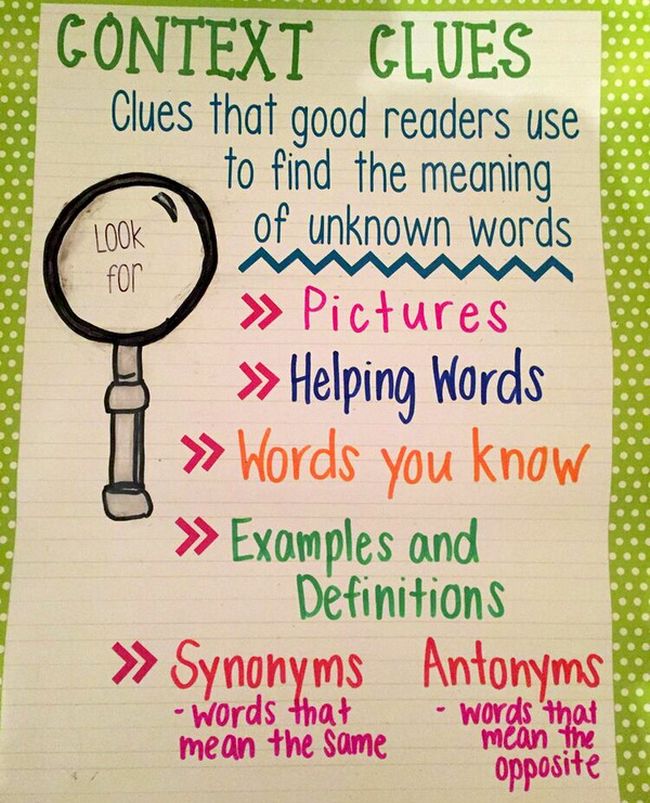
Younger students may benefit from a simpler approach to context clues. Their reading may include pictures to help them decipher new words.
Learn more: Mrs. Bates-Thomas
6. Nonsense Words
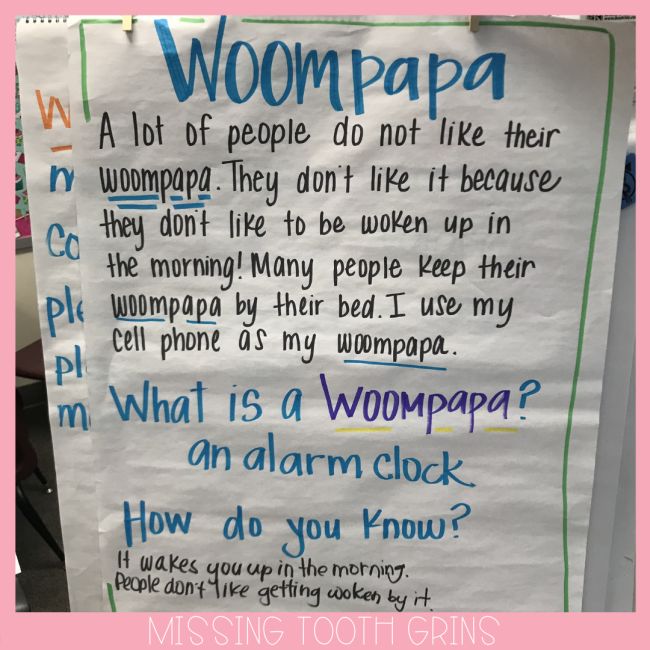
Nonsense words are a terrific way to help kids understand context clues. Many teachers like using books like Baloney (Henry P.) to introduce the concept to kids.
Learn more: Missing Tooth Grins
7. Context Clues Steps
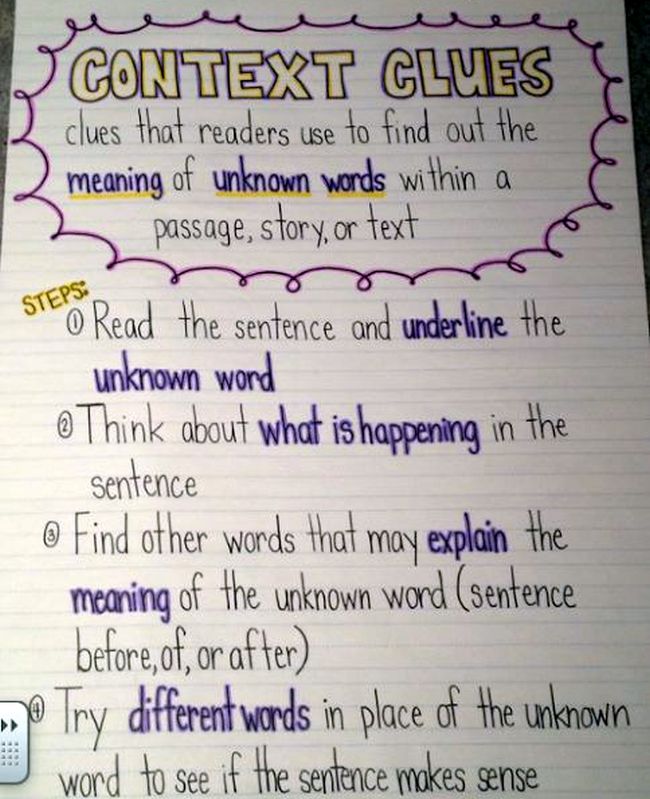
Context clues anchor charts like this one give students a series of concrete steps they can take when they come across an unknown word.
Learn more: ELA Anchor Charts
8. Look Around and Examine
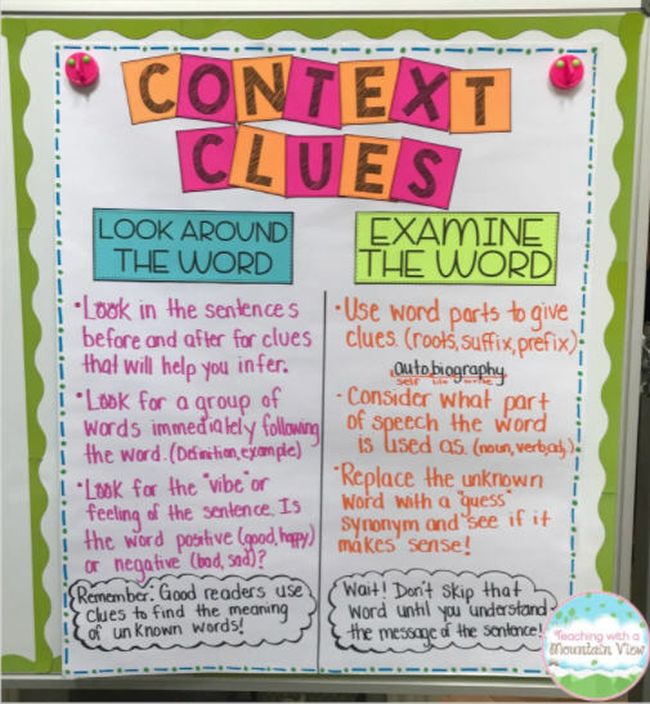
This chart reminds kids that they can find clues in the word itself or in the other words around it. It also underscores the important point: “Don’t skip that word until you understand the message of the sentence!”
Learn more: Teaching With a Mountain View
9. Context Clues Chart
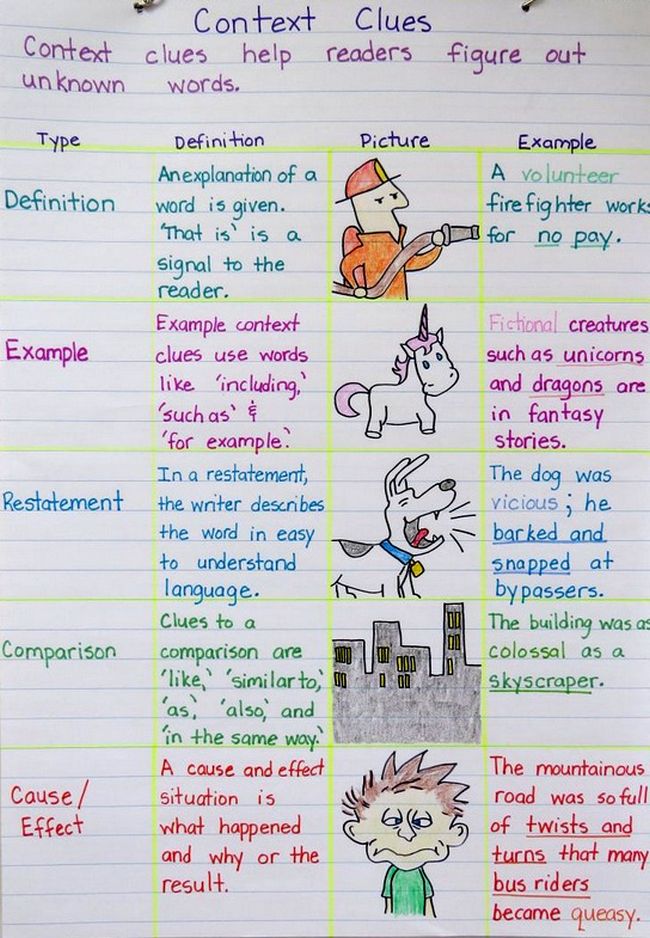
This chart breaks down different types of context clues, with both explanations and examples. It includes “signal words” that can help kids identify clues.
Learn more: Book Units Teacher
10. Interactive Context Clues Chart
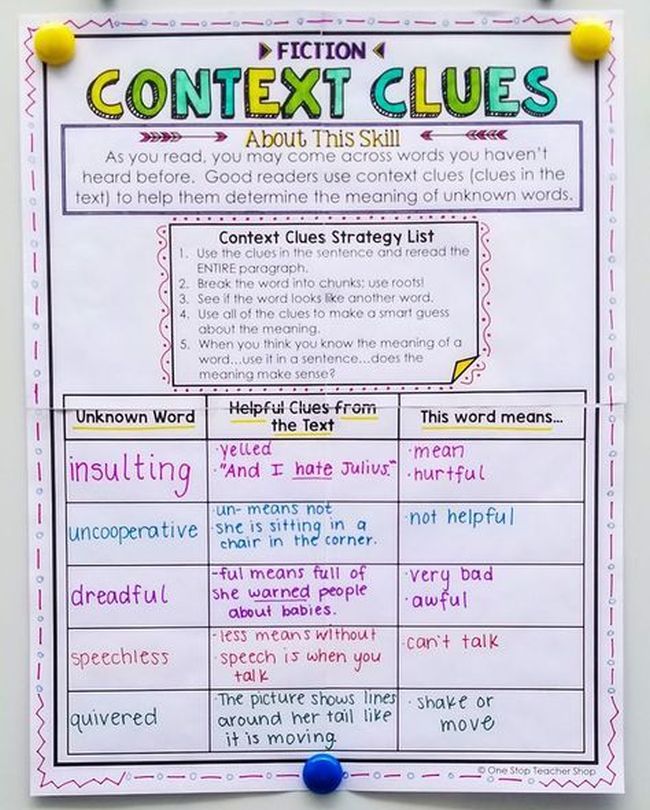
The best context clues anchor charts are those that teachers can use interactively along with their students. This one is a blown-up version of a worksheet students can complete as they read. Buy both at the link or design your own.
Learn more: One Stop Teacher Shop
11. Using Context Clues
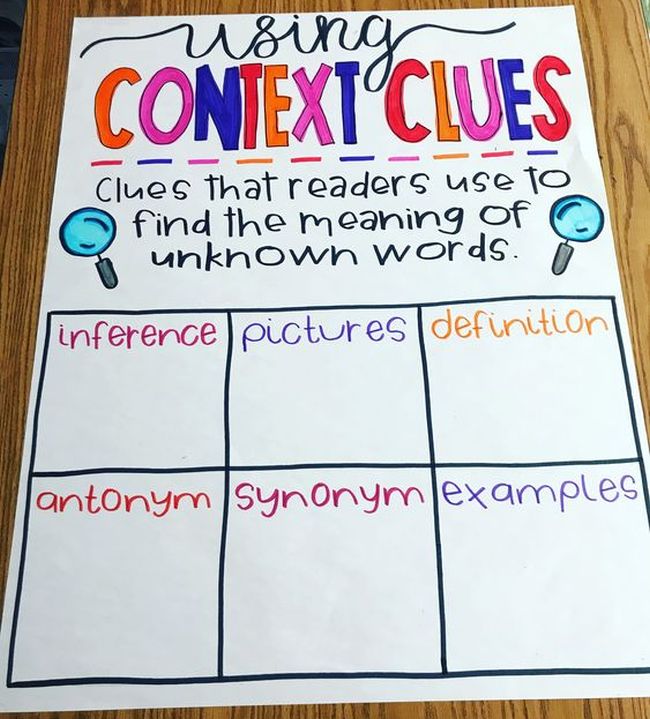
Here’s another interactive anchor chart. This one’s meant to be used with sticky notes, so it is reusable year after year.
Learn more: Margaret Mortimer/Pinterest
12. Text Detectives
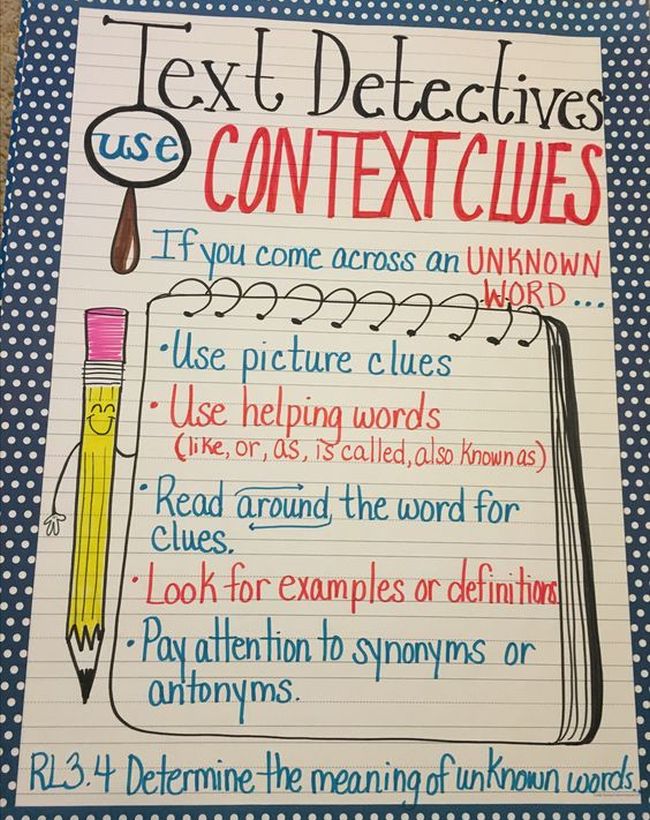
This spin on the “word detectives” chart includes hints to look for signal words and look to pictures for additional help.
Learn more: Abby/Pinterest
13. Make DEALS
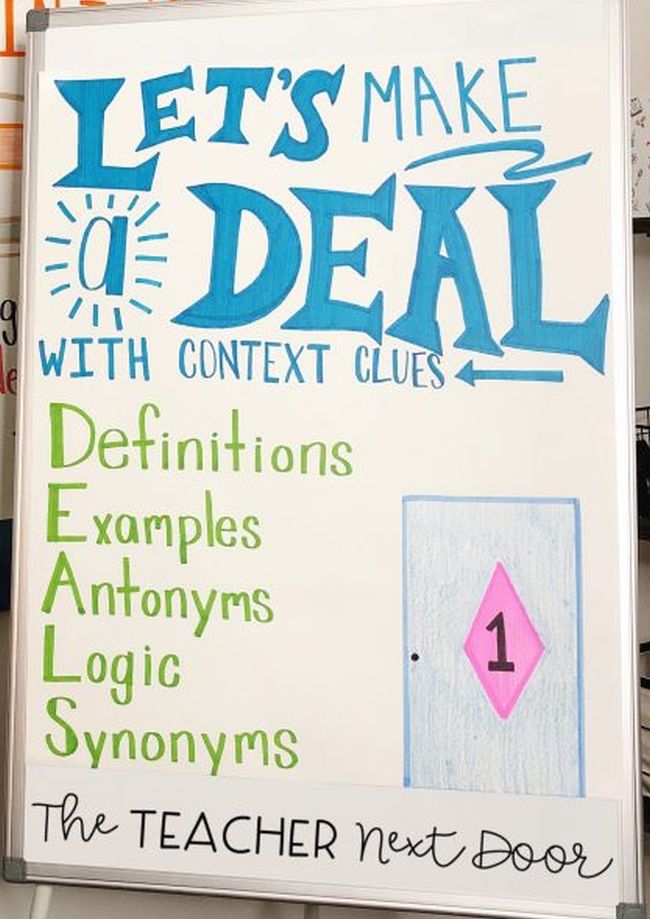
There are a variety of acronyms for finding context clues. DEALS stands for Definitions, Examples, Antonyms, Logic, and Synonyms.
Learn more: The Teacher Next Door
14. IDEAS
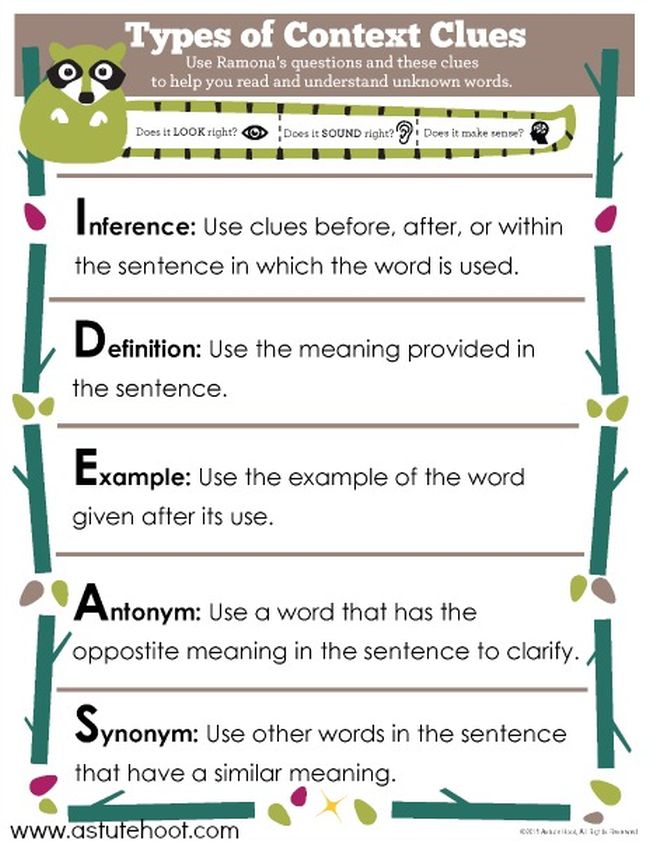
Here’s one last acronym to try: IDEAS. We also like the questions at the top: “Does it look right? Does it sound right? Does it make sense?”
Learn more: Astute Hoot
Looking for more? Try these 40 anchor charts that nail reading comprehension .
Plus, get all the latest teaching tips and ideas when you sign up for our free newsletters!
